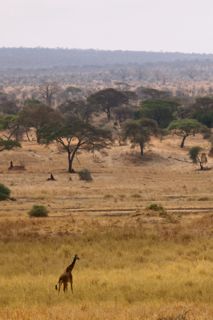Time is flying by way to quickly. I only have 17 days left in Africa. I can’t believe that this will all be over soon…
Today was Thanksgiving. We all had the day off from research and really made the most of it. We started preparing food early this morning and then played games and made Thanksgiving themed crafts all day. In the afternoon we visited a bar in town and spent some time relaxing and hanging out. Around 4 we had dinner here at camp and it was pretty spectacular. I stuffed my face with turkey, mashed potatoes, stuffing, green bean casserole, sweet potatoes, bread, and more. Some people played football or took naps or watched movies. All in all I think that everyone had a really great day. I know I did! Tomorrow its back to the field, though. Here’s what DR (directed research) has been like so far:
First of all, there are three main DR groups–Ecology, Environmental Policy, and Wildlife Management. I am part of the latter and as a team we are looking at the ecological viability of the wildlife sanctuaries in our area. Almost everyday we go to a different sanctuary and conduct surveys to find out how many animals are there and if wildlife and livestock are using overlapping habitats. Our DR group is split up into smaller groups of 2 or 3 students and each small group goes off on there own with a local guide and an armed KWS (Kenya Wildlife Service) guard. We walk pretty far each day through different types of terrain, taking down GPS points of where we see animals.
Our first day out in the field we went to Kimana Sanctuary. It was the first time anyone had conducted research there, so we actually spent the day mapping the boundaries of the sanctuary and then came back the second day to start the transect counts. I really enjoyed that day. We saw so many animals and it was amazing to be out there on foot with the wildlife all around us. I chased down some zebras and we came really close to an angry wildebeest who was not happy about us being in his territory. We sat under a big tree and had pb&j for lunch, watching giraffes mingling nearby. So awesome. The other days so far were pretty similar. Sometimes we didn’t see many animals but still had a great time exploring the landscape and talking with our African guides. Once we were hiking through some pretty dense brush and came across a group of elephants. They were very close to us and seemed a little agitated; we tried to go around them, but our guard determined that they were too dangerous to pass. So we had to turn back and go another way. It was really exciting! In total we will survey five different sanctuaries and will hopefully have enough data to make some recommendations about the management of the area. The land here is really important and needs to be protected properly because it is a major migration corridor for wildlife between Tsavo and Amboseli National Parks. When I’m there running transects and its hot and I’m tired of walking, I just remember how awesome it is to be contributing to a pool of knowledge that is truly vital to the survival of the parks and the many large mammal species that live here.
Location: Kimana, Kenya







